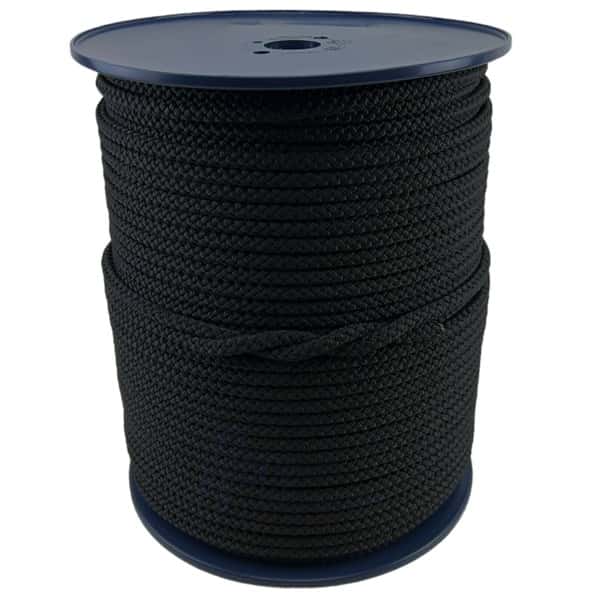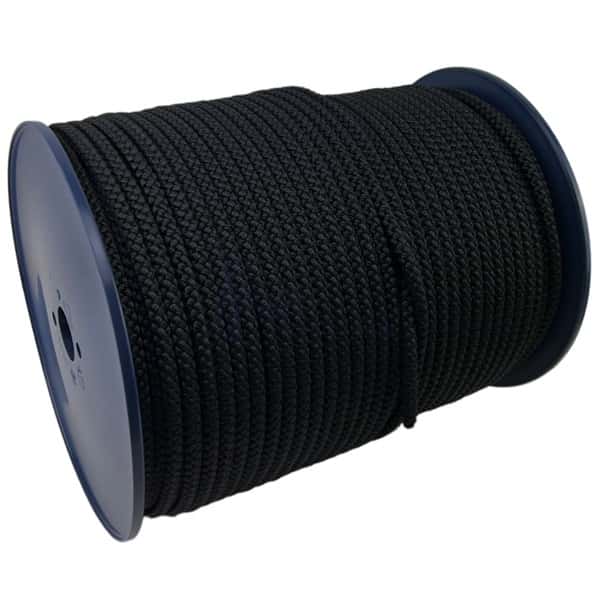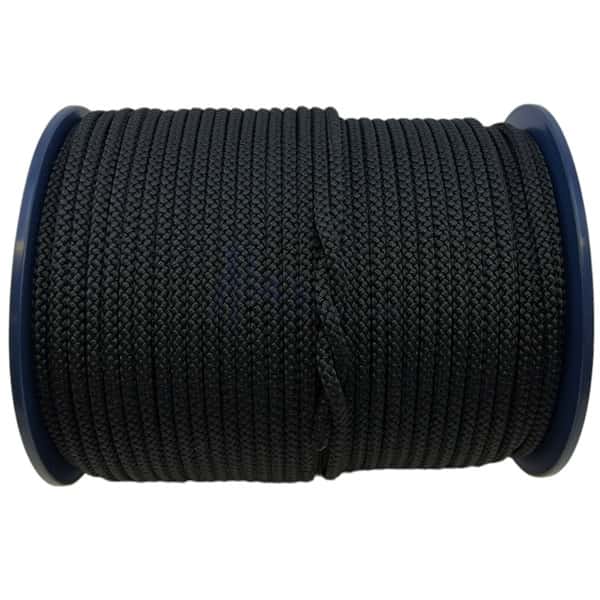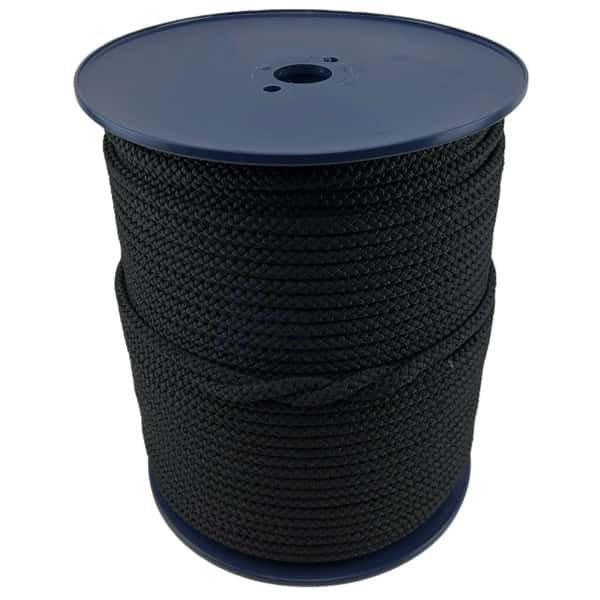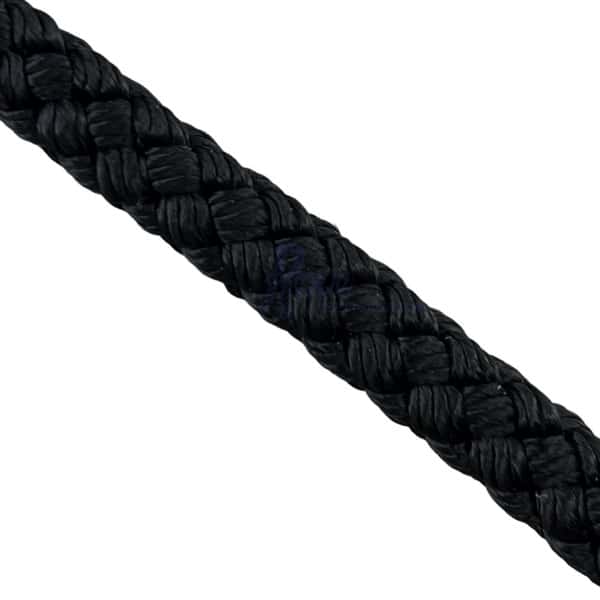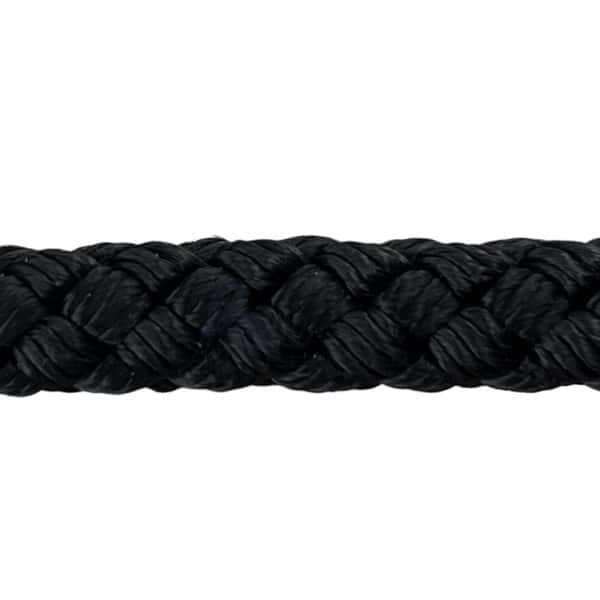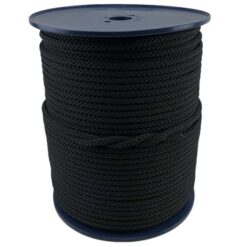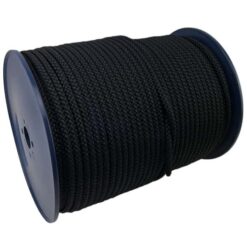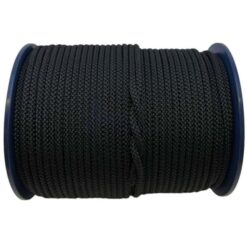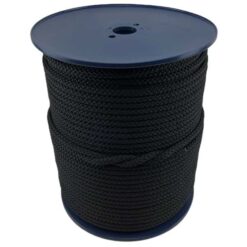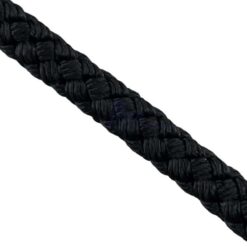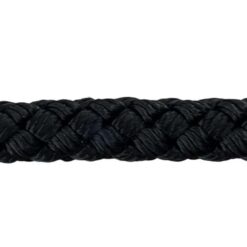6mm Black Braided Polyester Rope 8 Plait x 1000 Metre Reel
£450.00
6mm Black Braided Polyester Rope – 1000 Metre Reel
Introducing our 6mm Black 8-Plait Polyester Rope x 1000 Metre Reel– the ultimate marine and general-purpose rope that embodies softness, flexibility, durability, and strength. Crafted with high tenacity polyester, this cord is designed to exceed expectations in various applications.
Key Features:
High Tenacity Polyester: Our 8-Plait Polyester Cord is engineered with high tenacity polyester, ensuring exceptional strength and resilience in any setting.
Specific Gravity 1.38 (sinks in water): With a specific gravity of 1.38, this cord sinks in water, making it an ideal choice for marine applications where buoyancy is a key consideration.
MBL Approximately 856kg (not test certificated): While not test certificated, the 8-Plait Polyester Cord offers an impressive Minimum Breaking Load (MBL) of approximately 856 kg, showcasing its robust construction.
UV Resistance Excellent: Enjoy peace of mind with excellent UV resistance, ensuring that this cord remains unaffected by prolonged exposure to the sun’s rays.
Abrasion Resistance Excellent: Designed to withstand wear and tear, the cord exhibits excellent abrasion resistance, making it perfect for demanding applications.
Chemical Resistance Good: The cord’s good chemical resistance adds to its versatility, allowing it to perform reliably in various environments.
Versatile, reliable, and built to last, our 8-Plait Polyester Cord is the go-to choice for those seeking a rope that excels in marine and general-purpose applications. Elevate your projects with a cord that combines softness, flexibility, and strength in every strand.
| DIAMETER | MAXIMUM LENGTH PER REEL | APPROXIMATE BREAKING LOAD |
|---|---|---|
| 1.5mm | 200 Metres | 93kg |
| 3mm | 1000 Metres | 193kg |
| 4mm | 1000 Metres | 285kg |
| 6mm | 1000 Metres | 856kg |
| 8mm | 500 Metres | 978kg |
| 10mm | 200 Metres | 1529kg |
Synthetic Rope and Its Properties
Synthetic rope is made from man-made fibers such as nylon, polyester, polypropylene, and polyethylene. These ropes are known for their high strength, durability, and resistance to various environmental factors. Unlike natural ropes, synthetic ropes do not absorb water, making them ideal for use in wet and outdoor environments. However, synthetic ropes have their own set of characteristics and considerations that you should be aware of.
Behavior in Wet Conditions
One of the key advantages of synthetic ropes over natural ones is their minimal water absorption. Synthetic ropes generally do not shrink or expand when exposed to moisture, making them highly reliable in marine, industrial, and outdoor applications. However, while they do not absorb water, some synthetic ropes may become slippery when wet, which can affect handling and knot-holding capabilities.
Effects of UV Exposure
Unlike natural ropes, synthetic ropes are resistant to rot and mildew, but they can be affected by prolonged exposure to UV rays. Over time, UV exposure can weaken the fibers, causing the rope to degrade and lose strength. To mitigate this, synthetic ropes can be treated with UV inhibitors or stored out of direct sunlight when not in use.
Resistance to Chemicals and Abrasion
Synthetic ropes are generally more resistant to chemicals and abrasion compared to natural ropes. For instance, nylon and polyester ropes are highly resistant to various oils, acids, and alkalis, making them suitable for harsh industrial environments. Additionally, these ropes have excellent abrasion resistance, which means they can withstand rough surfaces without significant wear.
Elongation and Stretch
Different types of synthetic ropes have varying degrees of elongation. For example, nylon rope is known for its elasticity, which allows it to absorb shock loads without breaking. This makes nylon rope ideal for dynamic applications such as climbing, towing, and mooring. On the other hand, polyester rope has low stretch, making it suitable for applications where maintaining tension is critical.
Care and Maintenance
To extend the lifespan of synthetic ropes, it’s important to follow proper care and maintenance practices. Regularly inspect the rope for signs of wear, abrasion, or UV damage. If the rope shows significant signs of wear, such as fraying or thinning, it should be replaced to ensure safety and performance.
Storage Considerations
When storing synthetic ropes, keep them in a cool, dry place, away from direct sunlight and chemicals. Coiling the rope properly and avoiding tight bends can also help prevent kinks and maintain the rope’s integrity.
Summary
Synthetic ropes offer numerous advantages over natural ropes, including resistance to water, rot, and chemicals. They are durable and strong, making them suitable for a wide range of applications. However, it’s important to be aware of their susceptibility to UV damage and to take appropriate measures to protect the rope from prolonged exposure. By properly maintaining and storing synthetic ropes, you can ensure their longevity and reliable performance in various conditions.



